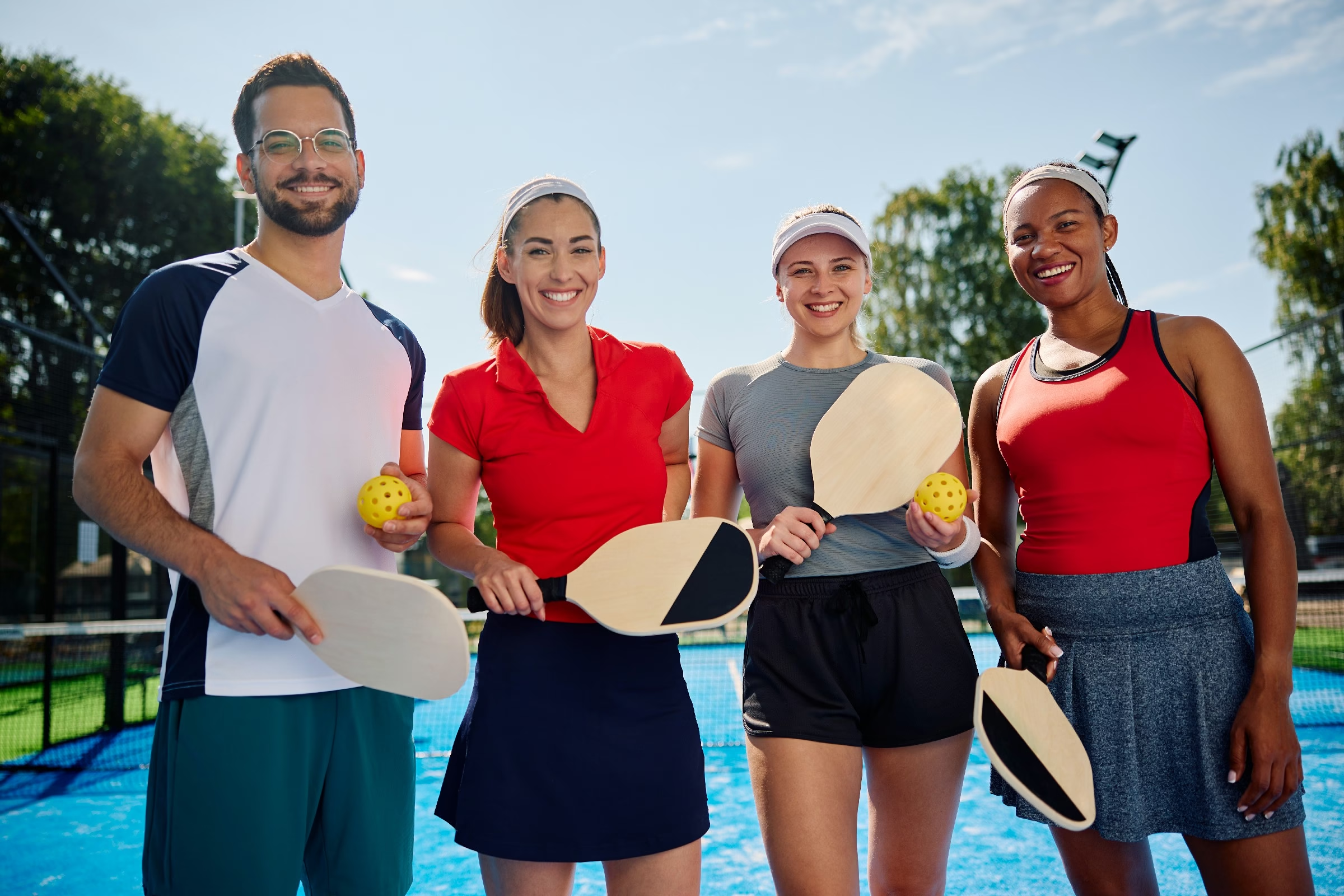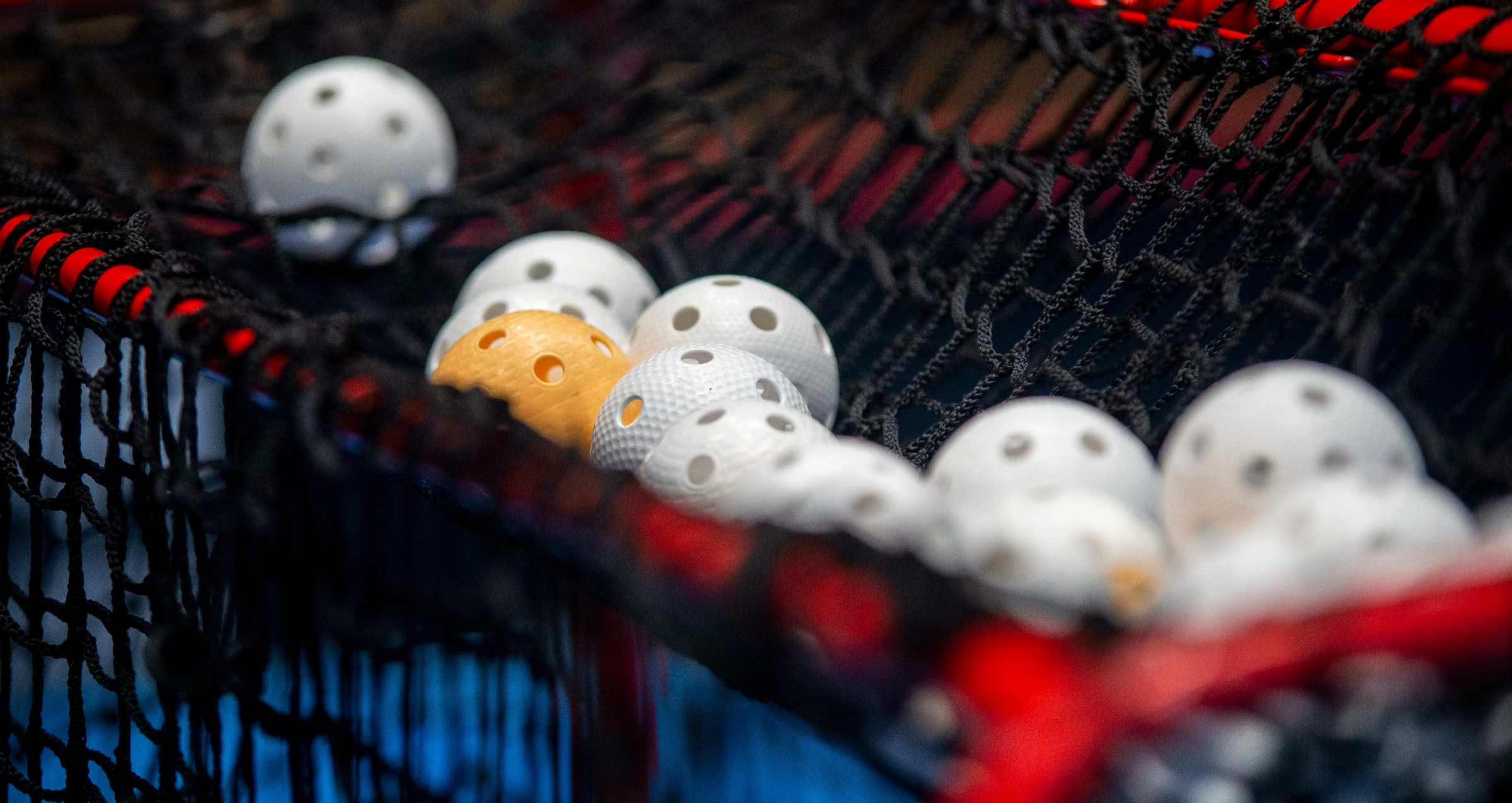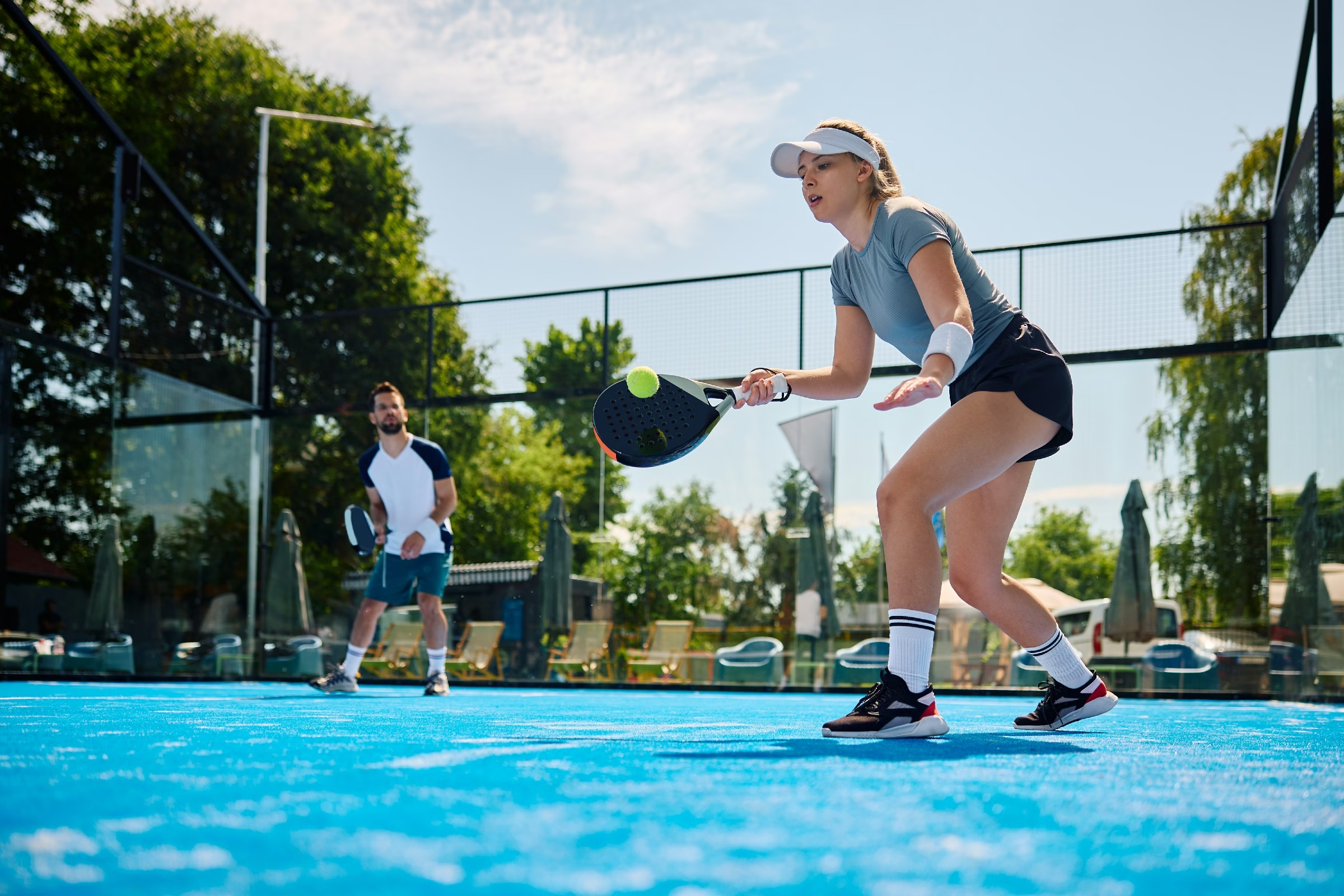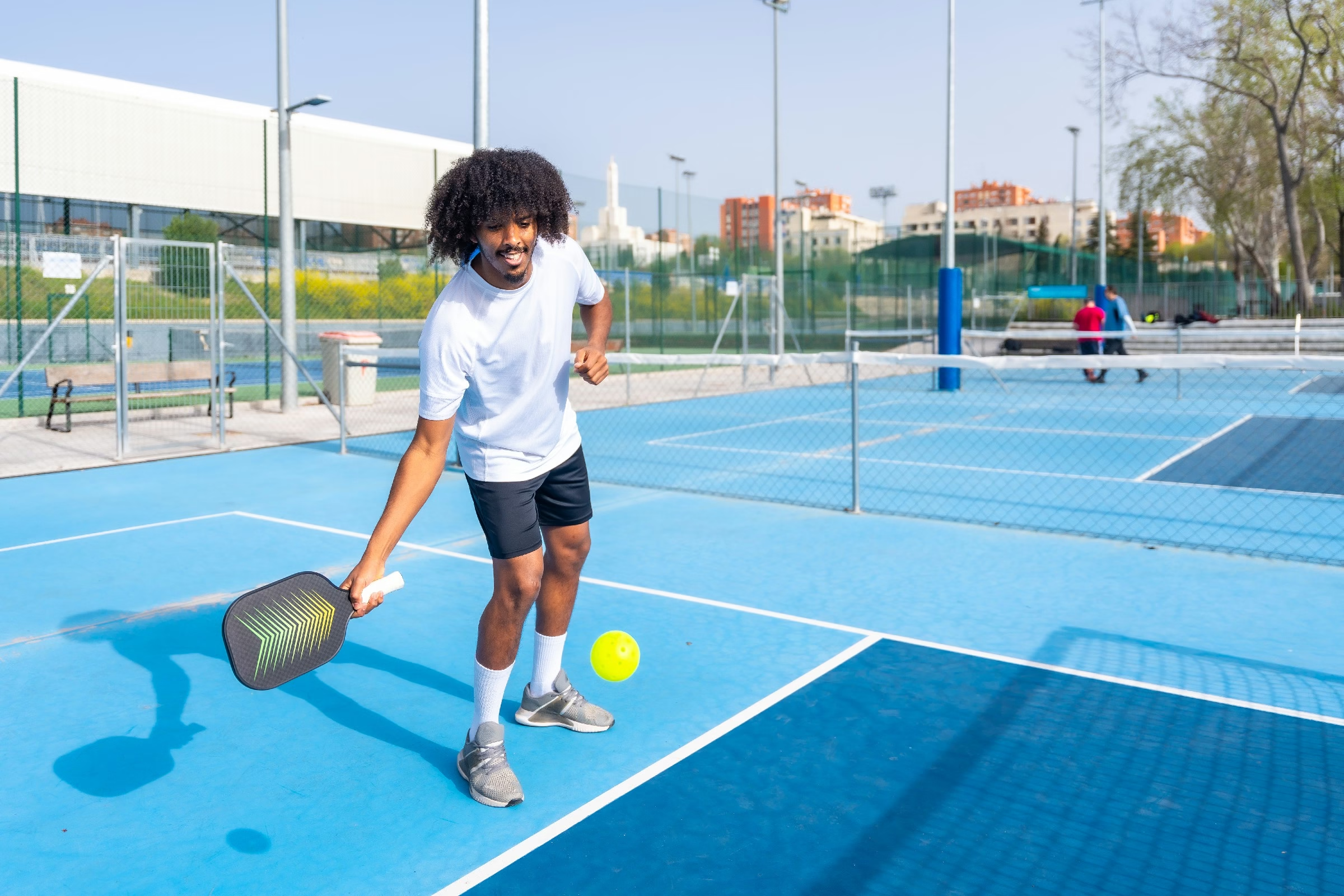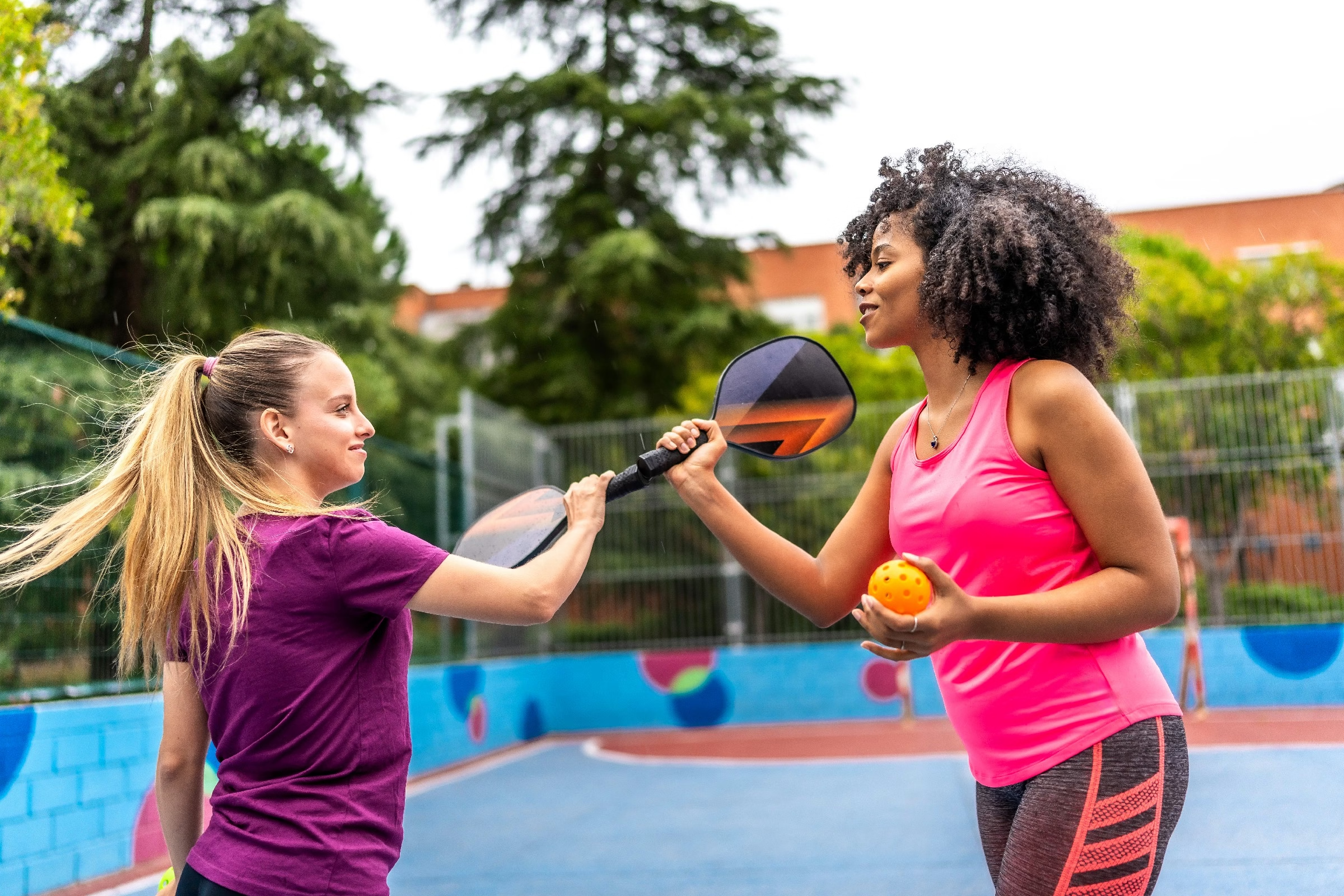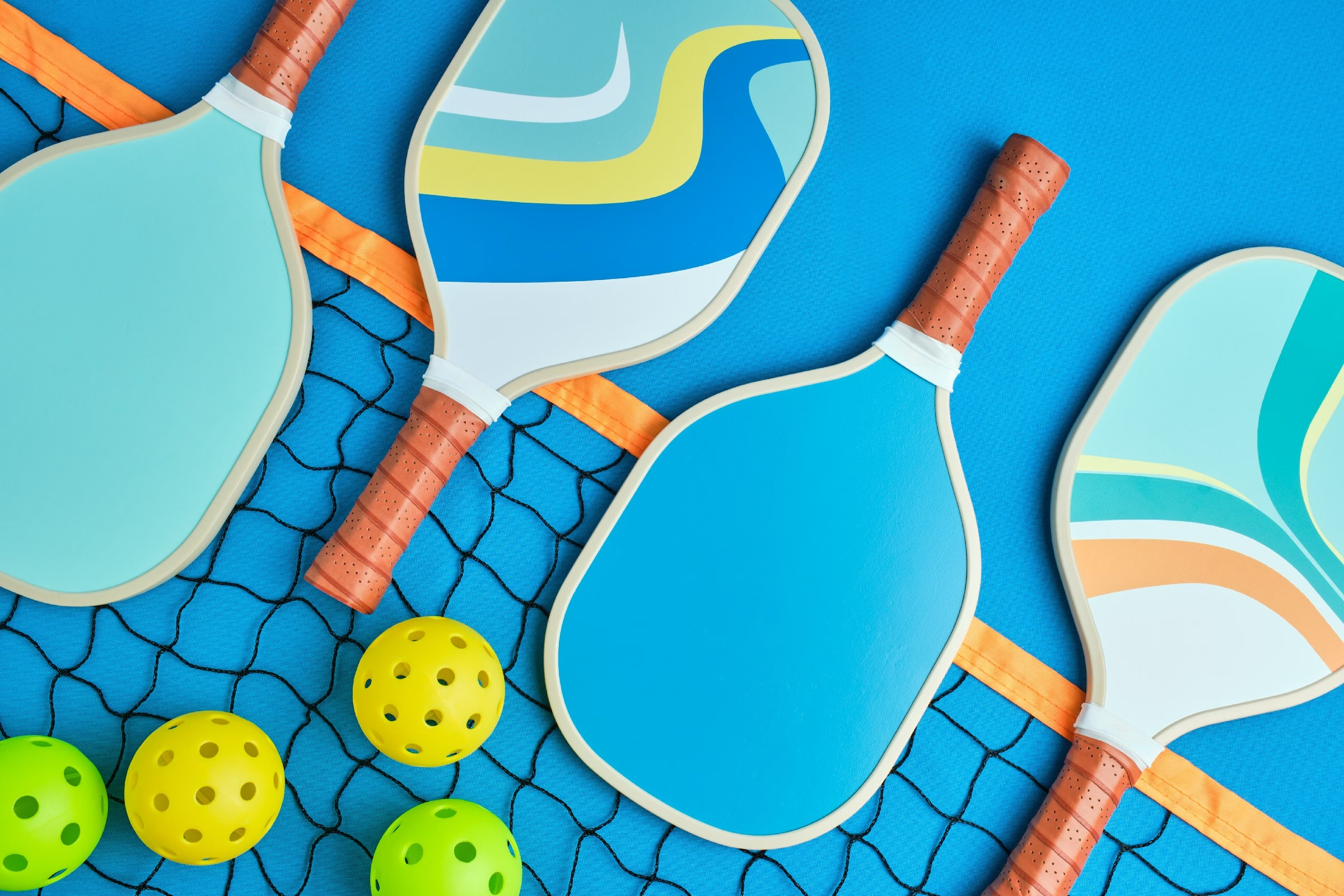Blog
how to tell if pickleball paddle is dead

Is Your Pickleball Paddle Past Its Prime? Decoding the Signs of a Dead Paddle
In the world of pickleball, your paddle is not just a tool; it’s an extension of your skills, a crucial partner in every serve, volley, and smash. Over time, as with any piece of sports equipment, paddles can wear out, losing their energy and performance. But how do you know when your trusty paddle has reached the end of its life? Identifying a “dead” paddle involves more than just inspecting its surface for scratches or dents. Subtle signs can signal a decline in effectiveness that might go unnoticed until it starts to heavily impact your game. In this article, we’ll explore the telltale indicators that your paddle might be taking its final bow, helping you make informed decisions about your gear and ensuring that you’re always set up for success on the court. Whether you’re a seasoned player or a newcomer to the sport, keeping your paddle in top shape is essential for elevating your game and enjoying the vibrant experience that pickleball offers. Let’s dive in and discover the signs of a paddle that may need to be retired to the sidelines.
Table of Contents
- Understanding the Lifespan of your Pickleball Paddle
- Signs of Wear and Tear: Identifying a Paddles Limits
- The Sound of Performance: Listening for Changes in Play
- Testing the Grip: Evaluating the Paddles Handle Integrity
- Evaluating the Core: Assessing Weight and Balance Shifts
- When to Replace: Timing for Optimal Playability
- Q&A
- Closing Remarks
Understanding the Lifespan of Your Pickleball Paddle
The lifespan of a pickleball paddle is influenced by several factors, including the material, frequency of play, and the way it’s handled. Composite paddles,as a notable example,tend to last longer due to their durable materials,while wood paddles may degrade faster with heavy use. Regular wear and tear can lead to a decline in performance, which is frequently enough the first sign that your paddle might potentially be nearing the end of its life. Learning to recognize these signs is crucial for maintaining your game.
To help you gauge whether your paddle is still in its prime,consider these indicators:
- Surface Wear: Look for noticeable scratches,dents,or delamination on the paddle’s face.
- Loss of Grip: An old paddle may have a slick handle, impacting your control during play.
- Sound: A paddle that produces a dull thud instead of a crisp pop during strikes might be losing its effectiveness.
Regular inspection of your equipment can help extend its life. Below is a simple table to assist you in understanding the key lifespan factors:
| Factor | Impact on Lifespan | recommended Action |
|---|---|---|
| Material Quality | Affects durability | Choose high-quality paddles |
| Frequency of Use | Accelerates wear | Rotate with spare paddles |
| Storage Conditions | Can contribute to damage | Store in a cool, dry place |
Signs of Wear and Tear: Identifying a Paddles Limits
Recognizing the subtle signs that indicate a pickleball paddle has reached its limit is essential for maintaining optimal performance on the court. Over time, degradation of materials can lead to diminished power and control, drastically impacting your game. Here are some common indicators to look out for:
- Cores and Edges: Check for visible cracks, chips, or separation where the core meets the edge guard. A compromised structure often results in a lack of responsiveness.
- Weight: If your paddle feels unusually lighter than when you first acquired it, the material may be breaking down, leading to changes in balance and execution.
- Surface Texture: Run your fingers across the paddle face. A smooth feel may suggest that the grit has worn down,reducing spin potential and control.
Another crucial aspect to evaluate is the performance of the paddle during play. You might notice that your shots lack the usual pop or depth.Here’s a simple table to compare signs of performance decline:
| Sign of Decline | Description |
|---|---|
| Poor Ball Response | Shots don’t come off the paddle with the same speed or accuracy. |
| Vibration on Impact | Increased vibration in your hand upon striking the ball. |
| Loss of Spin | Difficulty in generating the same level of spin on the ball. |
Ultimately, it’s important to listen to your paddle and heed these warning signs. Regularly inspecting your paddle for these indicators can save you from subpar gameplay and potential injury. If you find yourself consistently struggling with performance, it may be time to consider a replacement to ensure every match is as competitive as it can be.
The Sound of Performance: Listening for Changes in Play
The unmistakable sound of your pickleball paddle striking the ball is often the first indicator of its health. A vibrant, solid thwack is what every player seeks, but as paddles wear over time, that sound can subtly change. Listen closely during your games; if the sound becomes dull or muted,this can signify that the paddle’s core structure is compromised.A diminished sound quality may suggest that the materials inside the paddle are breaking down,affecting both performance and control.
Another auditory clue to consider is the resonance of the paddle upon impact. A well-performing paddle should produce a crisp tone that enhances your play. If you begin to notice a sluggish or muffled sound upon impact, this could suggest a loss of tension or integrity in the paddle’s core. The softer the sound,the less energy is being transferred to the ball,which could ultimately affect your shots’ velocity and accuracy. Pay attention to these shifts, especially during crucial gameplay moments.
keep an ear out for any unusual vibrations or rattling noises, which can indicate internal damage. If you can hear components shifting or dislodging, it’s a clear signal that your paddle may have reached the end of its lifecycle. A quick inspection of the paddle’s surface and edges can also help reveal signs of wear and tear that may not be instantly audible. The nuanced soundscape of a pickleball match can be the ultimate diagnostic tool; trust your instincts and the sounds around you to determine if it’s time to replace your paddle.
Testing the Grip: Evaluating the Paddles handle Integrity
When assessing whether your pickleball paddle has lost its vitality, one of the crucial areas to examine is the handle.The integrity of the paddle’s handle directly influences your grip and, subsequently, your performance on the court. Start by visually inspecting the handle for any signs of wear. Look for:
- Cracks or splits: Any visible damage can compromise your control.
- Worn-out grip material: If you notice a slick surface,it might be time for a replacement.
- Paddle rattling: If the handle feels loose or produces a sound when shaken, that’s an indication of internal damage.
Next, putting the paddle through a practical test can reveal hidden flaws in the handle. Grip the paddle firmly and simulate your usual strokes. Pay attention to how the handle feels during play. Key indicators to note include:
- Firmness: It should feel solid and secure in your hand.
- Comfort: There should be no discomfort that distracts you from your game.
- Control: Test for slippage; your hand should feel stable at all times.
considering the material of the handle can provide additional insights into its potential longevity. A well-constructed handle often features durable materials that resist wear and tear over time. Here’s a quick comparison of common handle materials:
| Material | Durability | Grip Quality |
|---|---|---|
| Wood | Moderate | Natural but can wear |
| composite | High | Often features enhanced grip |
| Rubberized | Variable | Very high grip, tends to wear faster |
By effectively evaluating these aspects of your paddle’s handle, you can make an informed decision on whether it’s time to retire the paddle or continue enjoying its companionship on the court.
Evaluating the Core: Assessing Weight and Balance Shifts
Understanding the intricacies of your pickleball paddle’s core can illuminate whether it has lost its effectiveness. The core material, typically comprised of polymer, aluminum, or foam, plays a crucial role in how the paddle responds during play. To assess if your paddle is dead, examine the weight—a significant decrease can indicate deterioration in the core’s integrity. A paddle should maintain a consistent feel; thus, if it suddenly feels lighter, it might potentially be time for a replacement.
Balance shifts are equally telling. A well-balanced paddle allows for precise control and powerful shots. If you notice your paddle feels more head-heavy or lightweight, this imbalance might signal a change in performance due to core degradation. Players often describe this as losing the familiar feel of their paddle, impacting their overall gameplay.To effectively assess this,engage in practice sessions and take note of any inconsistencies in your swings or shots.
When evaluating your paddle’s performance, consider keeping track of specific characteristics. Below is a simple table to help you monitor these changes over time:
| Characteristic | Before Analysis | After analysis |
|---|---|---|
| Weight | Consistent | Reduced/Loss |
| Balance | even Distribution | Head-Heavy/Light |
| Control | High | Decreased |
By keeping a watchful eye on these signs and trends, you can better determine the health of your pickleball paddle’s core and make informed decisions about its longevity and performance. Embracing a routine evaluation can enhance your gameplay and ensure you always have the right equipment in hand.
When to Replace: Timing for Optimal Playability
Understanding the right moment to replace your pickleball paddle is crucial for maintaining peak performance on the court. over time, even the best paddles show signs of wear and tear that can significantly affect playability. It’s essential to monitor your equipment, especially if you notice any changes in how your paddle interacts with the ball. Here are some common indicators to look out for:
- Cracks or Chips: Visible damages can lead to inconsistent hits.
- Decreased Power: If you’re struggling to generate the same force, your paddle may have lost its zing.
- Paddle Shape Alteration: Any bending or distortion alters how the paddle strikes the ball.
Additionally, player comfort plays a significant role in timing your replacement. If your grip feels loose or uncomfortable, it could decrease your ability to control the paddle, leading to ineffective shots. A worn-out grip can also increase the risk of slippage during play. Consider assessing your paddle for:
- Grip Wear: A slick or frayed grip can affect handling.
- Unusual Vibration: Excessive vibrations during ball contact may indicate material degradation.
- Sound Change: A differently pitched sound on ball contact can signal damage.
To help gauge when to make the switch, you can track the lifespan of your paddle. Here’s a simple table to monitor key factors:
| Factor | Ideal Lifespan | Replacement Indicator |
|---|---|---|
| Surface Material | 1-2 Years | Visible wear, uneven texture |
| Core Material | 2-4 Years | Loss of responsiveness, power decline |
| Grip | 6-12 Months | Comfort degradation, slippage |
Q&A
Q&A: How to Tell if Your Pickleball Paddle is dead
Q1: What does it mean for a pickleball paddle to be “dead”?
A1: A “dead” pickleball paddle refers to one that has lost its ability to perform well. This can happen due to wear and tear, resulting in reduced power, control, and spin. Essentially, it’s like a favorite pair of shoes that, after manny miles, no longer offer the same comfort or support.
Q2: How can I tell if my paddle has lost its pop?
A2: If you find yourself needing to exert more effort to achieve the same distance or power in your shots, it’s a sign your paddle may be losing its vitality. A loss of that satisfying “pop” upon ball contact can indicate that the core material is breaking down. Trust your instincts—if it feels different, it probably is!
Q3: What signs should I look for on the paddle itself?
A3: Keep an eye out for physical signs such as cracks, chips, or significant wear on the hitting surface. These blemishes not only affect the aesthetics but can also impair the paddle’s performance.If the edges are frayed or the grip is worn thin, it might be time to consider a replacement.
Q4: Does the age of the paddle affect its performance?
A4: Absolutely! Like fine wine, pickleball paddles have a shelf life. Generally, most paddles last about 1-3 years, depending on usage and care. If your paddle has been through countless matches and practices, it’s likely edging towards its expiration date, even if it doesn’t show visible signs yet.
Q5: How can I test my paddle’s responsiveness?
A5: A quick test involves hitting the ball against a wall or backboard at various angles and speeds. Pay attention to how the paddle translates your strokes. If the ball feels sluggish or lacks the expected rebound, it might indicate that the paddle’s performance has diminished.
Q6: Is there a difference between composite and wood paddles in terms of wear?
A6: Yes! Composite paddles generally degrade faster than wood paddles due to the materials used. However, wood paddles can also lose their effectiveness over time, particularly if they swell from moisture or get warped. Always consider your paddle’s material when assessing its lifespan.
Q7: Can I revive a dead pickleball paddle?
A7: Unfortunately, paddle resurrection is not quite possible. Once a paddle has lost its structural integrity or performance, replacement is usually the best solution. However, you can take precautionary measures—like proper storage and cleaning—to prolong the life of a new paddle.
Q8: How can I prevent my paddle from “dying” too soon?
A8: To ensure longevity, consider these tips: use a paddle cover, avoid extreme temperatures, and regularly inspect for damage. Moreover, try to paddle without hitting hard surfaces or playing on overly abrasive courts, as this can lead to premature wear.
Q9: When should I start looking for a new paddle?
A9: If you’ve noticed significant performance changes, persistent pain in your arm or wrist (suggesting the paddle isn’t absorbing shock well), or have reached the 2-3 year mark of regular use—you might want to start shopping for a replacement. Remember, a new paddle can refresh your game and enhance your enjoyment on the court.
Q10: What should I consider when buying a new paddle?
A10: When selecting a new paddle, consider your skill level, play style, weight preference, and materials. It’s also wise to test a few paddles before making a commitment to ensure you find the perfect match for your game. Happy hunting!
Closing Remarks
As you delve into the delightful world of pickleball, recognizing when your paddle is reaching the end of its life can significantly enhance your gameplay and overall experience on the court. Just as a trusty sidekick must be reliable, so too must your paddle stand ready to deliver those precise shots and powerful serves. With the signs we’ve discussed – from wear and tear to diminished responsiveness – you now possess the knowledge to assess your paddle’s condition.Remember, every paddle has its own journey, and understanding the right time to retire it is indeed essential for maintaining your competitive edge. If you find your paddle slipping into the realm of ‘dead’, it might be time to explore new options that spark joy and inspire confidence. So, as you continue to engage in the thrilling rallies of pickleball, keep an eye on your equipment, embrace the evolution of your gear, and always play with passion. After all,in this vibrant court of life,your pickleball paddle should always be a source of strength,not a hindrance. Happy playing!

